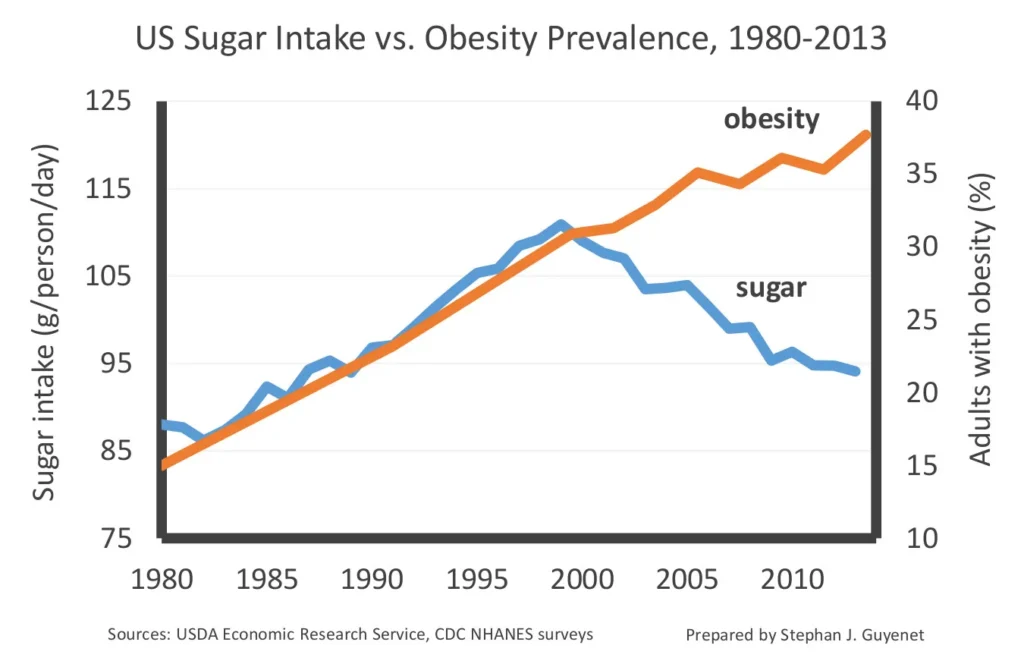- What’s in the Keto Diet?
- Macro Calculation
- How Does It Work?
- Sugar Madness
- Here are 10 scientifically proven benefits of the ketogenic diet:
- What to Eat & Drink on a Keto Diet:
- Tips for Keto Diet Success:
- Side Effects of Keto:
- Types of Ketogenic Diets:
- Supplements for the Keto Diet:
- Keto vs. Other Diets:
- Keto FAQs:
The ketogenic diet has gained immense popularity in recent years, emerging as a leading dietary trend. Surprisingly, this regimen has been around for almost a century, proving its enduring appeal. Although not suitable for everyone, the keto diet holds promise for those seeking to shed fat, explore an alternative energy source, or manage conditions such as type 2 diabetes.
In this comprehensive guide, we will delve into all aspects of the keto diet, offering insights on initiation, meal choices, and its potential benefits.
What’s in the Keto Diet?

The ketogenic diet is characterized by a high-fat, low-carb approach, replacing conventional staples like bread and sugary cereals with foods such as avocados, butter, and fatty meats. Many individuals adopt the keto lifestyle to address health issues like arthritis, diabetes, and chronic inflammation.
The key mechanism driving the diet’s effectiveness is ketosis, a metabolic state explained further below. In addition to the already mentioned health advantages, adherents of the keto diet often experience sustained energy levels, diminished cravings and reduced sugar addiction, improved mental clarity, a sense of satiety, and decreased inflammation. Further details on the scientific basis for these notable health benefits will be explored below.
Originating in the 1920s, the ketogenic diet initially served as a treatment for refractory epilepsy in children resistant to conventional medication. Beyond effectively reducing seizures, it unexpectedly led to rapid weight loss.
Unlike traditional calorie-centric diets, keto doesn’t rely on a strict calories-in, calories-out model. In fact, achieving weight loss in ketosis doesn’t necessarily require meticulous calorie counting.
Contrary to the predominant approach of calorie counting for the past five decades, the ketogenic diet emphasizes the consumption of nutrient-dense foods and maintaining low carbohydrate intake. This approach enables individuals to naturally regulate calorie intake without the need for active calorie restriction.
The ketogenic diet relies heavily on the manipulation of macronutrient ratios, emphasizing a high-fat, low-carb approach. In order to sustain ketosis, where the body utilizes ketones for energy, it is essential to maintain specific proportions of carbohydrates, fats, and proteins.
Macro Calculation

When it comes to carbohydrates, the goal is for them to constitute less than 5% of total caloric intake, typically recommended at less than 20g daily during the initial phase. Tracking net carbs, calculated as Total Carbs minus Fiber, is crucial as it reflects the carbs that significantly impact blood sugar levels. Protein intake should be moderate, falling between 0.6 and 1.0 grams per pound of lean body mass.
The high-fat aspect of the diet is equally important, with fat contributing to satiety, energy (during ketosis), and overall palatability. Aiming for over 70 percent of daily calories from fat is common, while keeping net carbs under 20g and achieving the targeted protein intake.
Though the concept may seem complex, various apps are available to simplify macronutrient tracking. A sample breakdown for a daily intake of 2000 calories on the keto diet might include 80g net carbs, 80g protein, and 133g fat.
How Does It Work?
The effectiveness of the ketogenic diet lies in the process of ketosis, initiated within the first 3-7 days. As the body depletes glycogen stores due to reduced carbohydrate intake, it shifts to using fat for energy, producing ketones as a more efficient energy source than glucose.
The benefits of ketosis extend beyond weight loss, impacting energy levels, satisfaction between meals, and cognitive function. Contrary to traditional dietary guidelines promoting low fat and high carbohydrates, the keto diet challenges these notions, offering a healthy lifestyle change associated with combating chronic diseases.
Sugar Madness

While some argue that keto is unsustainable, historical trends suggest otherwise. The drastic increase in refined sugar consumption over the past 40+ years raises questions about the sustainability of conventional dietary practices.
The ketogenic diet, which emphasizes specific macronutrient ratios, has gained popularity due to its potential health benefits. Modern chronic diseases, more prevalent today, are attributed to the widespread consumption of cheap, easily accessible carbohydrates.
Scientifically, there appears to be minimal necessity for the high-carbohydrate diets commonly followed today (between 225-325 grams). The ketogenic diet, by inducing ketosis, mimics fasting and may offer not only short-term benefits but also potential long-term advantages, possibly extending lifespan.
Here are 10 scientifically proven benefits of the ketogenic diet:
- Weight Loss: Transitioning to a fat-adapted state aids in weight loss by increasing satiety and positively affecting hunger hormones.
- Improved Heart Health: Contrary to the myth associating dietary fat with cholesterol rise, keto diets have been shown to improve cholesterol levels and reduce heart disease risk factors.
- Sustained Energy Levels: Shifting to burning fat as the primary fuel source leads to stable energy levels throughout the day by maintaining steady blood sugar.
- Reduction in Epileptic Seizures: Ketosis has demonstrated a reduction in seizures, making the ketogenic diet a therapeutic option for epilepsy.
- Aid in Diabetes Treatment: Long-term adherence to a keto diet improves outcomes for diabetes patients by combating insulin resistance and promoting healthy blood sugar levels.
- Improved PCOS Symptoms: The ketogenic diet shows promise in alleviating symptoms associated with Polycystic Ovarian Syndrome (PCOS), such as insulin sensitivity and hormonal balance.
- Less Severe Acne Breakouts: While the science is in early stages, keto’s potential impact on skin health, possibly through improved autophagy, may contribute to reduced acne.
- Hope for Brain Disease Treatment: Keto is being studied for its effectiveness in treating various brain-related diseases, including Alzheimer’s, Parkinson’s, traumatic brain injury, ALS, Huntington’s, and schizophrenia.
- Cancer Treatment: The keto diet may support better mitochondrial function and aid in decreasing tumor sizes, particularly in brain cancer. Some case studies suggest benefits in conjunction with traditional cancer treatments.
- Increased Longevity: The ketogenic diet’s support for cellular regeneration through autophagy may contribute to an extended lifespan.
What to Eat & Drink on a Keto Diet:

Foods to Include:
- Meat
- Full-fat dairy
- Eggs
- Fish
- Animal fats (butter, lard, tallow)
- Natural oils (olive, coconut oil)
- Non-starchy vegetables
- Low-carb fruits (berries, lemon, lime)
- Nuts and seeds
Foods to Avoid:
- High-sugar foods and drinks
- Grains and starches
- Most fruits (except low-carb options)
- Starchy vegetables
- High-protein foods in excess
- High-carb condiments
- Low-fat foods and drinks
- Sugar-free foods with excessive sugar alcohols
- Inflammatory fats
- Alcohol (with caution)
Tips for Keto Diet Success:
- Brace Yourself for the Keto Flu: The initial transition may bring discomfort, but it’s temporary. Electrolyte supplements, hydration, and strategic dietary adjustments can help.
- Don’t Restrict Calories Initially: Calorie restriction becomes more manageable once fully fat-adapted, leading to decreased cravings and hunger.
- Keep Protein Intake Moderate: Excessive protein may trigger insulin responses. Aim for 0.6g to 1.0g of protein per pound of lean body mass.
- Don’t Fear Fat: Embrace healthy fats as a crucial component of the diet, addressing potential low-energy issues.
- Plan Healthy Swaps: Replace high-carb snacks with keto-friendly alternatives to ease the transition.
- Add More Fats to Your Routine: Incorporate fatty cuts of meat, fat bombs, and additional fats to enhance flavor and meet macro goals.
Side Effects of Keto:
- Keto Flu: Temporary symptoms include headaches, body aches, sugar cravings, and fatigue during the initial transition.
- Nutrient Deficiencies: Watch for potential deficiencies in selenium, zinc, copper, and consider supplementing or consuming mineral-rich foods.
- Hormone Issues: Women with hormone-sensitive conditions may need to monitor hormone levels or consider carb cycling.
- Constipation: Increase fiber intake through fibrous vegetables and seeds.
- Keto Breath: The production of ketone bodies can result in temporary unpleasant breath.
- Temporary Reduction in Physical Performance: Initial transition may impact endurance, but it improves with time.
- Less Common Side Effects: Gout, keto rash, elevated cholesterol, gallstones, and hair loss may occur in a small number of individuals.
Types of Ketogenic Diets:

- Standard Keto: 5% carbs, 10-20% protein, 75-85% fat.
- Modified Keto: Varied macronutrient ratios, less likely to sustain ketosis.
- Carb Cycling: Alternating higher-carb days, often around intense workouts.
- Restricted Keto: Involves both carb and calorie restriction, used in specific medical contexts.
- High-Protein Keto: Increases protein intake, primarily for bodybuilders.
- Vegetarian/Vegan Keto: Possible but challenging; some call it ketotarian.
- Dirty Keto: Allows for inflammatory oils; not recommended for extended periods.
- Lazy Keto: Focuses primarily on carb counts, less meticulous about overall macros.
Supplements for the Keto Diet:
- Low-carb whey or vegan protein
- Cod liver oil
- MCT oil
- Magnesium glycinate
- Electrolyte supplements
Keto vs. Other Diets:
- Keto vs. Low-Carb Diets: Keto emphasizes fat intake, unlike some low-carb diets that may cycle in more carbohydrates.
- Keto vs. Low-Fat Diets: Keto shows more significant improvements in weight and heart disease markers compared to low-fat diets.
- Keto vs. Paleo/Primal Diets: While sharing similarities, keto focuses on macronutrients and ketosis, whereas Paleo eliminates dairy and emphasizes whole foods.
- Keto vs. the Mediterranean Diet: Both recommend avoiding added sugar, refined oils, and processed foods; differences lie in carb sources and red meat consumption.
Keto FAQs:
- Can women over 50 do keto? Yes, with considerations for fiber intake and exercise types.
- Can I work out on keto? Yes, with potential initial adjustment, keto can support exercise performance.
- Is ketosis the same as ketoacidosis? No, ketoacidosis is a dangerous condition associated with diabetes; dietary ketosis is a normal metabolic state.
- Shouldn’t I avoid saturated fat? Saturated fats aren’t the enemy; while moderation is wise, they are not directly linked to heart disease.
These insights aim to provide a comprehensive understanding of the ketogenic diet, its benefits, implementation tips, potential side effects, and comparisons with other diets. It’s crucial to approach any dietary changes with individual health considerations and consult with healthcare professionals if needed.
You Might Also Like:






